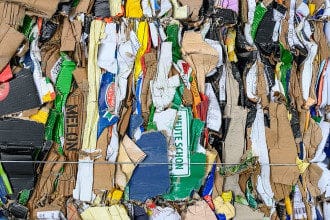By Harry Cooper – It’s no secret that many of the things we do in our everyday lives have a tremendous impact on the health of the environment. While it may seem very small in comparison to a global scale, the amount of things we use in our everyday lives cause a tremendous amount of pollution, and negative environmental impact.
Living a More Environmentally Healthy Life
In today’s society we tend to consume more goods than we have ever done in the past. While some people see this as a sign of economic prosperity, the creation and disposal of such enormous amounts of goods has some very grave consequences for the environment. Choose sustainable living, reduce your use of non-renewable resources, reduce waste or aim for zero waste and have a positive impact on the environment.
Reduce What You Buy!
Fortunately there are many ways in which we can cut down on the things we use and household waste, and still live comfortably. By putting even just a little bit of thought and awareness into how we live our day to day lives, we can start working to reduce what we buy and consequently reduce waste. Think about buying secondhand clothes or products at thrift stores to reduce production cycles, save energy and save money. Buy foods when needed in quantities that you really need for your meal plan. Convert to using paperless bills, tap water, old clothes, digital subscriptions and mason jars. Repair items instead of just throwing them in the trash. Most importantly, learn to differentiate between what you need and what you want!
Reduce Food
Food is necessary for everyone on Earth to survive. But even with food being such an essential product, we have found that massive amounts of food go uneaten, unused, and completely wasted every year. The UN estimates that half of all fruits and veggies are thrown out each year. This has made food waste one of the biggest challenges in tackling waste issues.
Where Does Food Waste Come From?
With so many people in the world facing food insecurity, it can be hard to understand how we can let so much food go to waste. As it turns out, there are a variety of different sources where food is wasted. Grocery stores overstock displays with food products that end up going bad. Restaurants give large portion sizes that cause customers to leave food on their plates.
But the largest amount of wasted food comes from residential homes. This is often due to improper planning, overbuying during grocery shopping, and misinterpreting food labels that lead to people having an abundance of spoiled food which is thrown into the trash.
Food Waste and the Environment
Reducing waste caused by food is not only important because there are so many people living with food insecurity, but also because it can have some negative impacts on the environment. Most food that ends up being thrown out ends up in a landfill.
While food decomposes naturally, in landfills food often decomposes without oxygen. When organic matter decomposes in this way it releases methane, an incredibly potent greenhouse gas.
One of many good ways to reduce waste and stop food scraps from ending up in a landfill is by composting. By putting your old food in a compost pile, and letting it decompose naturally, not only do you end up with a natural fertilizer, but you reduce the amount of food going to landfills.
Reduce Plastic
One of the most notable things that gets wasted on a daily basis is plastic products such as plastic wrap, plastic bags, and plastic bottles. While these products may seem like everyday items, they have a detrimental environmental impact when they’re thrown out and wasted.
Plastic and the Environment
Plastic has a tremendous impact on the environment at every stage of its life. When it is created it releases harmful gases, when it is used it often winds up as litter, but probably the most shocking effect of plastic is what happens when it starts to break down.
Microplastics
When plastic winds up in the environment, especially ocean environments, it becomes exposed to natural forces such as sunlight, wind, and waves that break it down into tinier pieces of plastic called microplastics. These microplastics are not only incredibly toxic, but also small enough for animals of all sizes to swallow undetected. Not only do toxic microplastics end up killing animals, but they also find their way into sea food that humans end up eating.
Reducing Plastic Waste
One of the more well know solutions to cutting down on plastic is by recycling, but recycling is very energy intensive, and it can be hard to find a recycling bin when you need one. Luckily there are plenty of reusable products that can replace some of their more wasteful plastic alternatives. such as reusable containers, a reusable water bottle, reusable cutlery, and reusable bags, along with many other products. Using reusable products, by bringing your own containers and using cloth bags can greatly help reduce waste.
Reduce Paper
Paper is another product that gets wasted all too often. Due to junk mail, printing errors, packaging waste, and countless other unnecessarily excessive uses of paper, paper waste has become a serious problem. Paper accounts for nearly 26% of all waste in landfills, however a more notable environmental concern that paper causes is deforestation.
Deforestation
The more paper we throw away, the more paper we use, and in turn the more paper we need to produce. Producing paper would not be such a problem if it didn’t involve cutting down so many trees, but researchers estimate that paper production is responsible for 10% of all deforestation.
Deforestation is used for clearing land for supporting local farmers and making wood products such as paper. Deforestation is one of the biggest environmental problems the world is facing. Deforestation accounts for around 12% of all greenhouse gas emissions in the world, and is destroying hundreds of ecosystems at an alarmingly rapid pace. It is estimated that over 80,000 acres of forest are lost a day.
Reducing Paper Waste
Similar to plastic waste, there are many more sustainable products that we can use to replace the paper products we use in our everyday lives. By replacing paper towels with cloth napkins or paper cups with reusable drink containers we can greatly reduce the waste we produce from using so much paper.
Reduce and Religion
Amber Khan describes in Wisconsin Muslim Journal how Islamic tradition provides inspiration for reducing waste. Khan details how the classic concept of “reduce, reuse, recycle” has strong foundations in Islam:
REDUCE: We are encouraged to reduce our use of water (Abu Dawud), even during the spiritual act of purification, and reduce our waste: “Eat and drink but do not waste…” (Quran 7:31).
REUSE: We are encouraged to re-purpose old items. It is reported that Muslim potters heated their kilns by burning fruit husks, fruit stones, pine cones and vegetable waste; millers ground their corn in mills turned by the wind; and windmills and animals were used to lift water into irrigation channels. Additionally, we are encouraged to use items until they can no longer be used. It is reported that Prophets repaired shoes and urged Muslims to wear-out clothes until they had patches on them.
RECYCLE: What may be waste to one may be useful to another. An example is donating excess food or sharing it with others rather than throwing it away. The Prophet(s) encouraged companions to share food with their neighbors (al-Albani).
* Featured image source








